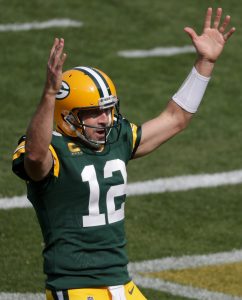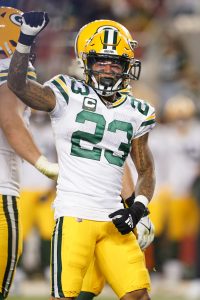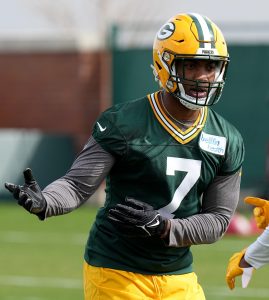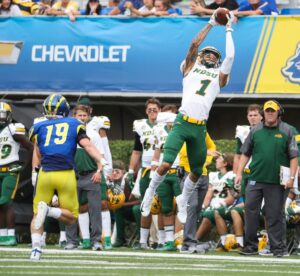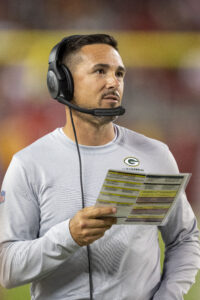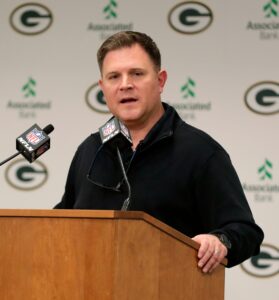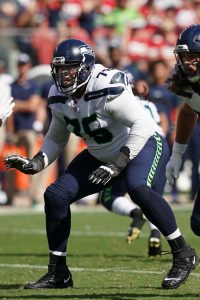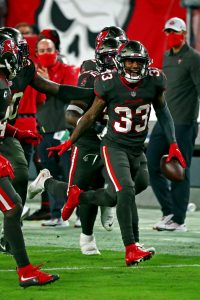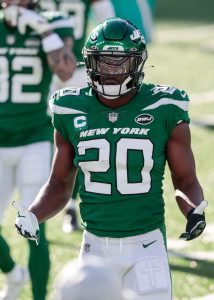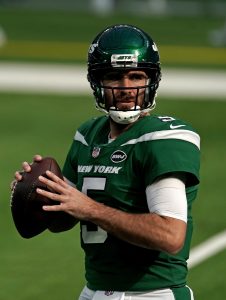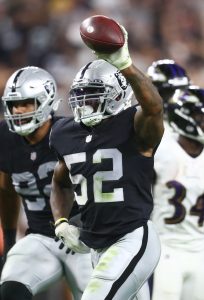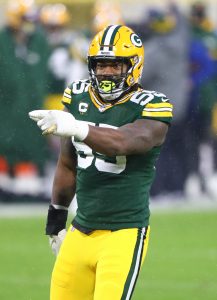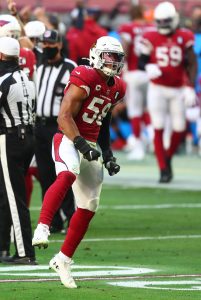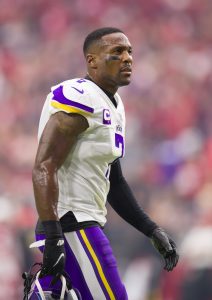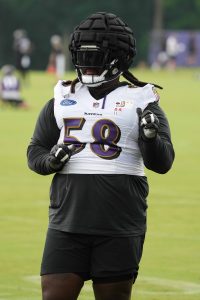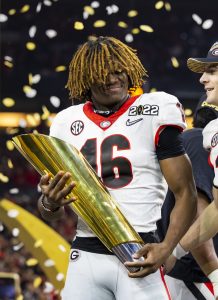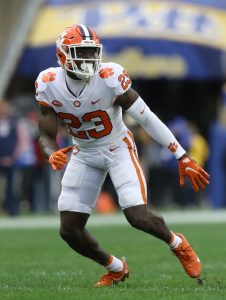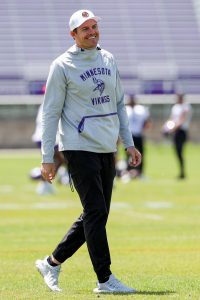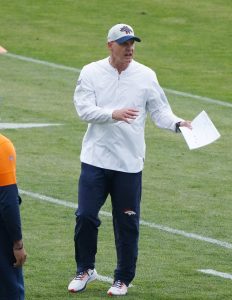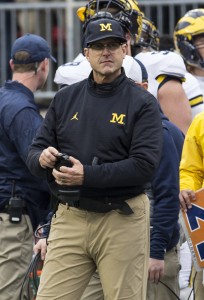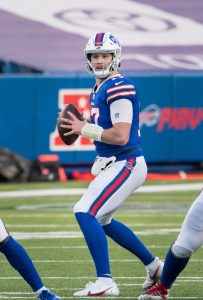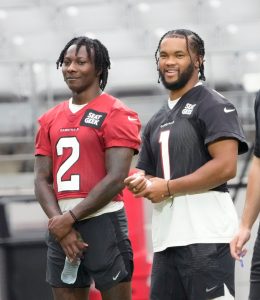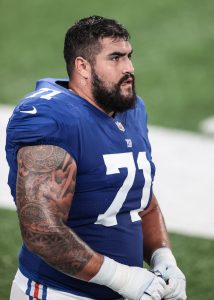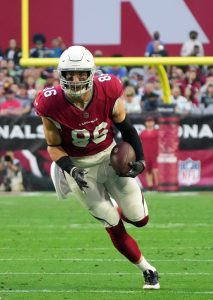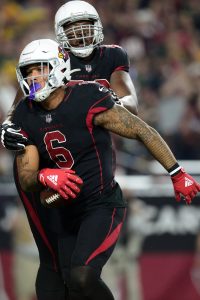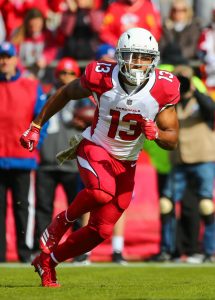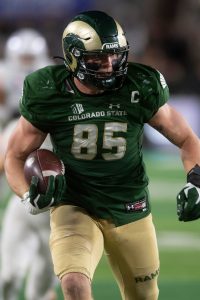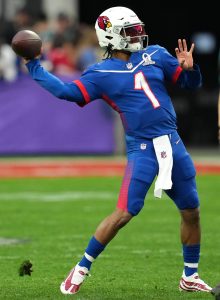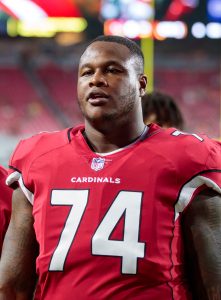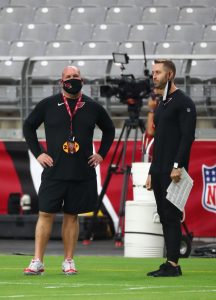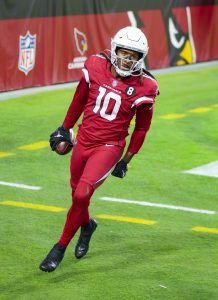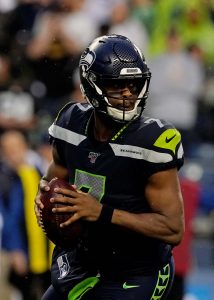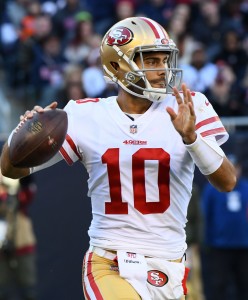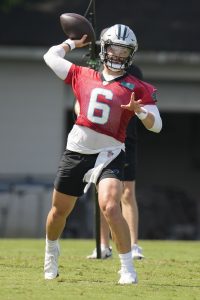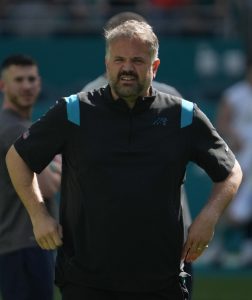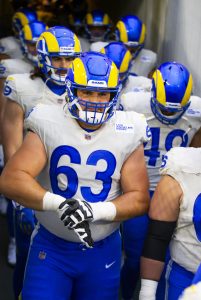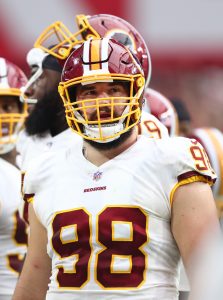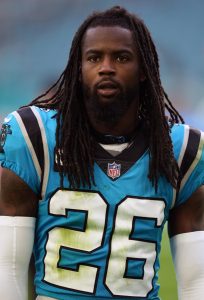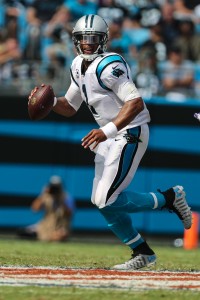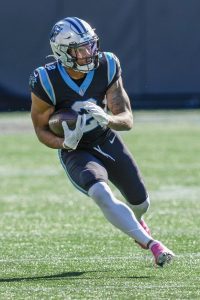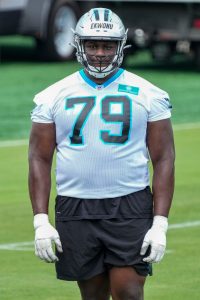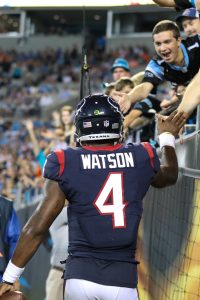Back to becoming a consistent Super Bowl threat in recent years, the Packers have remained unable to overcome perpetual postseason stumbling blocks. The team’s back-to-back No. 1 seeds from 2020-21 were a first in franchise history — with record-based home-field advantage only being introduced in the mid-1970s — but neither led to a Super Bowl berth. The Packers managed a third straight 13-win season but endured a divisional-round upset. Much has changed since, inviting big-picture questions.
Aaron Rodgers agreeing to stay in Green Bay marked the franchise’s most important offseason development, but the top weapon from his 13 years commanding the Packers’ offense leaving has brought scrutiny. The 38-year-old quarterback, who does not sound like he aims to follow in Tom Brady‘s footsteps by playing into his mid-40s, is now without his top two receivers from 2021. This late into the all-time great quarterback’s career, is this a Packers formula that will work?
Trades:
- Dealt WR Davante Adams to Raiders for 2022 first- and second-round picks
Adams contract issues came to a head this offseason. While the Packers momentarily kept the door open for a ninth Rodgers-Adams season by tagging the All-Pro wide receiver, their first tag usage in 12 years, GM Brian Gutekunst slammed it shut by agreeing to a trade that brought sweeping changes to the Packers’ passing attack and the receiver market. Previous Packers GM Ted Thompson did well to identify Adams’ potential by signing him to a $14MM-per-year accord in December 2017. That deal came months before Sammy Watkins‘ Chiefs contract brought a market correction. The receiver landscape stabilized for a bit in the years that followed, increasing incrementally, but Adams’ contract became quite Packers-friendly as it wound down. His $28MM-per-year Raiders pact triggered an avalanche.
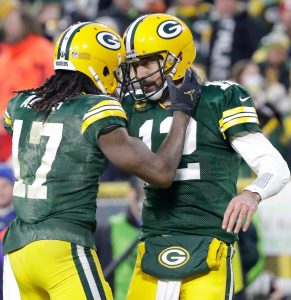 The Packers discussed a deal with Adams before the 2021 season, but the sides broke off talks. Failing to re-sign Adams before last season can be used against Gutekunst, but the wide receiver expressing hesitancy regarding another Green Bay contract for two quarterback-related reasons threw a wrench into the team’s relationship with its top Rodgers-era playmaker. Shortly after Rodgers’ April 2021 trade request, Adams said it factored into his own negotiations. This offseason, Adams said Rodgers’ future still mattered as he determined his own. Adams’ long-running interest in reuniting with Derek Carr (and vice versa) overshadowed all of this.
The Packers discussed a deal with Adams before the 2021 season, but the sides broke off talks. Failing to re-sign Adams before last season can be used against Gutekunst, but the wide receiver expressing hesitancy regarding another Green Bay contract for two quarterback-related reasons threw a wrench into the team’s relationship with its top Rodgers-era playmaker. Shortly after Rodgers’ April 2021 trade request, Adams said it factored into his own negotiations. This offseason, Adams said Rodgers’ future still mattered as he determined his own. Adams’ long-running interest in reuniting with Derek Carr (and vice versa) overshadowed all of this.
Green Bay out-offering Las Vegas for Adams and still seeing its star receiver opt for the Raiders represented an odd conclusion to this process — one that could impede the team’s latest run at a Super Bowl. Adams, 29, arrived in Vegas on the heels of five straight Pro Bowl invites, and he earned back-to-back first-team All-Pro nods for outings that obviously aided Rodgers’ two MVP honors.
Rodgers did plenty to boost Adams as well and has fared well without him in recent years. But the four-time MVP being stripped of this type of talent at this stage of his career will be a test. Adams missed time due to injuries over the course of his second contract, but the last time the Packers were without a No. 1-caliber Rodgers target for a full season was 2015. A March Adams trade and an August Jordy Nelson ACL tear are different matters, but Rodgers experienced a statistical dip that year — in the form of considerable drops in completion percentage, yards per attempt and QBR.
The Packers have had several months to adjust to Adams’ departure — one Rodgers knew was likely when he recommitted — and did package one of the trade assets to add a receiver piece (No. 34 overall pick Christian Watson). But this will be an interesting challenge and the kind of adjustment the Packer legend’s NFC QB rivals do not have to navigate this year.
Free agency additions:
- Jarran Reed, DL. One year, $3.25MM. $1.87MM guaranteed.
- Pat O’Donnell, P. Two years, $4MM. $950K guaranteed.
- Sammy Watkins, WR. One year, $1.85MM. $350K guaranteed.
- Dallin Leavitt, S. One year, $1.2MM. $85K guaranteed.
Not typically big spenders on the market, the Packers continued that trend with a quiet spring regarding outside hires. Although O’Donnell leaving his Bears punting post of eight years for the Packers is interesting, Watkins and Reed’s Wisconsin pledges were the biggest news on this offseason front.
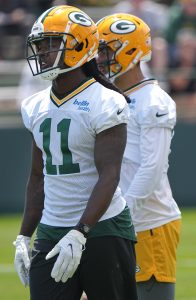 LaFleur worked as the Rams’ offensive coordinator during Watkins’ Los Angeles year (2017); Watkins played a career-high 15 games that season and helped the Rams snap a 13-year playoff drought. The former top-five Bills pick made some nice contributions, particularly in the 2019 postseason, during the Chiefs’ voyages to consecutive Super Bowls. But the one-time top prospect has not panned out as a pro. Watkins’ value drop from $16MM per year (Kansas City, 2018) to $5MM (Baltimore, 2021) to this reflects a player nearing his last chance. Watkins, 29, could potentially help the Packers as an auxiliary option. Asking the injury-prone target, who has topped 600 yards once in the past six seasons, to be a consistent contributor appears a bridge too far.
LaFleur worked as the Rams’ offensive coordinator during Watkins’ Los Angeles year (2017); Watkins played a career-high 15 games that season and helped the Rams snap a 13-year playoff drought. The former top-five Bills pick made some nice contributions, particularly in the 2019 postseason, during the Chiefs’ voyages to consecutive Super Bowls. But the one-time top prospect has not panned out as a pro. Watkins’ value drop from $16MM per year (Kansas City, 2018) to $5MM (Baltimore, 2021) to this reflects a player nearing his last chance. Watkins, 29, could potentially help the Packers as an auxiliary option. Asking the injury-prone target, who has topped 600 yards once in the past six seasons, to be a consistent contributor appears a bridge too far.
Even after adding Watkins, the Packers made runs at a few other veteran wideouts this offseason. They pursued Marquise Brown and Julio Jones and were linked to Deebo Samuel and DeVante Parker. It does not appear Samuel, who was most closely connected to the Jets, was a serious trade target. The Patriots landed Parker for a third-round pick, while it took a first (with a third coming back) for the Cardinals to nab Brown. It is understandable why the Packers stood down here, but the receiver links do point to the franchise remaining interested in veteran options. Until the Rams follow through on their incessant Odell Beckham Jr. reunion interest, the rehabbing star figures to stay on the Packers’ radar.
Reed refusing a 2021 Seahawks restructure, instead pushing for an extension, has sent him on a journeyman path. The Seahawks gave the defensive tackle a two-year, $23MM deal in 2020 but cut bait a year later. Reed signed a one-year, $5.5MM Chiefs pact in 2021 and could not command that this year. Still, the recent Chris Jones sidekick should help the Packers as a complementary inside pass rusher. Reed, 29, registered 10.5 sacks in 2018 and totaled 8.5 (counting two playoff sacks) two years later. He has not missed a game since his 2019 PED suspension and forced two fumbles last season. This could be a nice value signing for the Packers.
Re-signings:
- De’Vondre Campbell, LB. Five years, $50MM. $15MM guaranteed.
- Rasul Douglas, CB. Three years, $21MM. $5.3MM guaranteed.
- Robert Tonyan, TE. One year, $3.75MM. $1MM guaranteed.
As is frequently the case for the Packers, they did shell out some dough to retain their own UFAs. Both Campbell and Douglas boosted their stock by helping a depleted Packers team to the NFC’s No. 1 seed, and the team paid each nice money on the market. This was an easy place to look at where the Adams cash went.
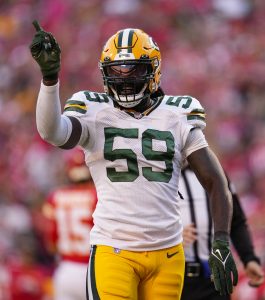 Campbell offered one of the more interesting breakthrough seasons in recent memory last year. The former Falcons fourth-round find morphed from a player Atlanta did not retain in 2020 to one Arizona also let walk after a modest contract (one year, $6MM) expired. The Packers nabbed Campbell in May 2021, on a one-year deal worth $2MM, and saw him become their first off-ball linebacker All-Pro in nearly 50 years. Campbell’s 146-tackle, two-forced fumble, two-INT, two-sack season graded behind only Micah Parsons among linebackers in 2021, per Pro Football Focus.
Campbell offered one of the more interesting breakthrough seasons in recent memory last year. The former Falcons fourth-round find morphed from a player Atlanta did not retain in 2020 to one Arizona also let walk after a modest contract (one year, $6MM) expired. The Packers nabbed Campbell in May 2021, on a one-year deal worth $2MM, and saw him become their first off-ball linebacker All-Pro in nearly 50 years. Campbell’s 146-tackle, two-forced fumble, two-INT, two-sack season graded behind only Micah Parsons among linebackers in 2021, per Pro Football Focus.
This does represent a significant deviation for the Packers, who had largely avoided off-ball linebacker investments post-A.J. Hawk. The Pack both signing Campbell and drafting Quay Walker swerves from that route. Campbell is only guaranteed his signing bonus, though roster bonuses of $3MM (2023) and $2.9MM (’24) are due on Day 3 of those league years. Still, this equates to an upper-middle-class linebacker deal.
Compared to his pre-Green Bay career trek (five teams from September 2020 to October 2021), Douglas securing a $7MM-per-year accord is a big win for the nomadic cornerback. Teams were still skeptical of Douglas’ breakout 2021, however, judging by his low guarantee figure. If Douglas’ 2021 (five INTs, two pick-sixes, an eye-catching 44.5 passer rating allowed as the closest defender) proves a mirage, the Packers can escape the contract in 2023. The team obviously hopes he can be a long-term contributor alongside first-rounders Jaire Alexander and Eric Stokes. Douglas, 28, is expected to patrol the slot for Green Bay, which let Chandon Sullivan sign with Minnesota.
Tonyan’s midseason ACL tear cost him dearly. Instead of the 2020 breakout performer capitalizing on two solid years as a Rodgers weapon, he had to settle for a low-end contract. Although Tonyan has just four years’ experience, he is already 28. With Week 1 availability uncertain, the stakes will be high for the ex-UDFA to deliver this season. His window to cash in is closing.
But the Packers have uncertain receiver situation. Tonyan’s nice, perhaps unsustainable, 11-touchdown 2020 season (a 52-catch, 586-yard campaign) still points to him being the Packers’ top tight end when healthy. That status still should point the Indiana State alum’s arrow upward, but Tonyan will need to prove himself again. Not doing so will call the team’s tight end plan into question.
Notable losses:
- Corey Bojorquez, P
- Dennis Kelly, T
- Kevin King, CB
- Tyler Lancaster, DL
- Whitney Mercilus, OLB (retired)
- David Moore, WR
- Lucas Patrick, OL
- Za’Darius Smith, OLB (released)
- Equanimeous St. Brown, WR
- Chandon Sullivan, CB
- Billy Turner, T (released)
- Marquez Valdes-Scantling, WR
Days after the Adams tag-and-trade transaction, Valdes-Scantling defected to the Chiefs. Prior to the AFC West gutting the Packers’ receiving corps, the NFC North champs tried to retain the deep threat. MVS ran into a slightly better market than he anticipated, expecting to sign a one-year deal in the $7-$10MM AAV range. The Chiefs guaranteed the four-year Packer contributor just $8.6MM, indicating Green Bay did not make a substantial offer to keep the former fifth-round pick.
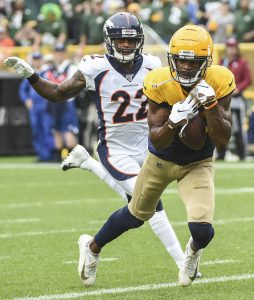 The Valdes-Scantling departure gave the Packers a unique offseason task, given their status as a top-shelf contender and employment of a quarterback legend approaching 39. The team is losing a wideout who dealt with sporadic drop issues but one who led the league in yards per catch (20.9) in 2020. Valdes-Scantling’s defection plunged the Packers into one of the more unusual receiver situations in recent NFL history. The two playmakers’ exits remove nearly 2,000 2021 receiving yards from Green Bay’s equation. This will move a lot onto the shoulders of Allen Lazard(career-high 513 receiving yards, eight TDs in 2021), with the team also likely to rely more on Aaron Jones‘ receiving abilities.
The Valdes-Scantling departure gave the Packers a unique offseason task, given their status as a top-shelf contender and employment of a quarterback legend approaching 39. The team is losing a wideout who dealt with sporadic drop issues but one who led the league in yards per catch (20.9) in 2020. Valdes-Scantling’s defection plunged the Packers into one of the more unusual receiver situations in recent NFL history. The two playmakers’ exits remove nearly 2,000 2021 receiving yards from Green Bay’s equation. This will move a lot onto the shoulders of Allen Lazard(career-high 513 receiving yards, eight TDs in 2021), with the team also likely to rely more on Aaron Jones‘ receiving abilities.
Considering the Packers’ Thompson-era strategy in free agency — largely avoiding it, save for some notable SFAs — Gutekunst’s 2019 Smith contract (four years, $66MM) raised eyebrows. The ex-Ravens contributor was coming off a promising 2018 season, but the Packers unlocked his potential. Smith soared to back-to-back Pro Bowls as a Packer and anchored the edge rush for two straight NFC championship game-bound teams, combining for 26 sacks from 2019-20. Smith’s 2021 back injury contributed to his Green Bay exit, but the team’s offseason contract restructure — which inflated the edge defender’s 2022 cap figure to $28.1MM — pointed him out the door anyway.
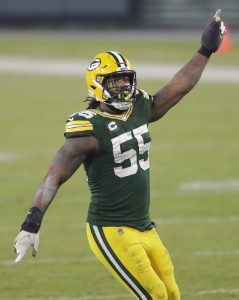 Smith’s early-season back surgery did preview the Packers’ current OLB configuration. Rashan Gary is now in place as Green Bay’s top edge player, with ex-Za’Darius sidekick Preston Smith set to flank him. It will be interesting to see if Za’Darius Smith can regain his previous form; the Vikings threw out a midlevel bet on him doing so. The Packers will surely see a motivated defender come Week 1. Ditto Sullivan, whom the Packers did not keep despite the Vikings needing only needing to pay $1.75MM to move him out of Green Bay. The team’s primary slot defender to start the 2020s, Sullivan surpassed the 70% snap barrier in each of the past two seasons.
Smith’s early-season back surgery did preview the Packers’ current OLB configuration. Rashan Gary is now in place as Green Bay’s top edge player, with ex-Za’Darius sidekick Preston Smith set to flank him. It will be interesting to see if Za’Darius Smith can regain his previous form; the Vikings threw out a midlevel bet on him doing so. The Packers will surely see a motivated defender come Week 1. Ditto Sullivan, whom the Packers did not keep despite the Vikings needing only needing to pay $1.75MM to move him out of Green Bay. The team’s primary slot defender to start the 2020s, Sullivan surpassed the 70% snap barrier in each of the past two seasons.
The coaches that left Wisconsin this offseason took some Packers role players with them. Nathaniel Hackett is eyeing Turner as his starting right tackle in Denver. One of several Packers O-linemen to miss time due to injuries last season, Turner saw time at guard and both tackle spots in three Green Bay seasons. His exit strips the Packers of more experience.
David Bakhtiari and Elgton Jenkins returning healthy would minimize the exits of Turner and Kelly, but we are a ways away from knowing the Packers O-line cogs’ respective 2022 availability. New Bears OC Luke Getsy pried Patrick, St. Brown and Moore. Primarily a guard, Patrick started 28 games for the Packers from 2020-21. If Jenkins and Bakhtiari are not back in Week 1, Green Bay will not feature much experience up front.
Extensions and restructures:
- Agreed to three-year, $150MM deal with QB Aaron Rodgers
- Extended CB Jaire Alexander on four-year, $84MM deal
- Handed OLB Preston Smith four-year, $52.5MM extension
- Reached pay-cut agreement with WR Randall Cobb
- Restructured David Bakhtiari‘s contract, converting $11.58MM into signing bonus
- Restructured Kenny Clark‘s contract, converting $13.6MM into signing bonus
The Packers were busy on the extension front this offseason; their biggest deal produced multi-city fallout. The Broncos were linked to Rodgers for nearly a year, being the primary suitor in the event the once-disgruntled Packer ultimately wanted out. Not long after Rodgers’ Packers recommitment, the Broncos went with Plan B — a Russell Wilson trade that had not produced rumors nearly on the level the Rodgers-to-Denver scenario had. Although this process lingered up until the franchise tag deadline, seeming to coincide with Adams’ status, the Packers kept their cornerstone player. Just as he did with his 2013 ($22MM per year) and 2018 ($33.5MM AAV) extensions, Rodgers tops the quarterback market. Illustrating this positional market’s rapid growth, this re-up makes him the first $50MM-per-year NFLer.
